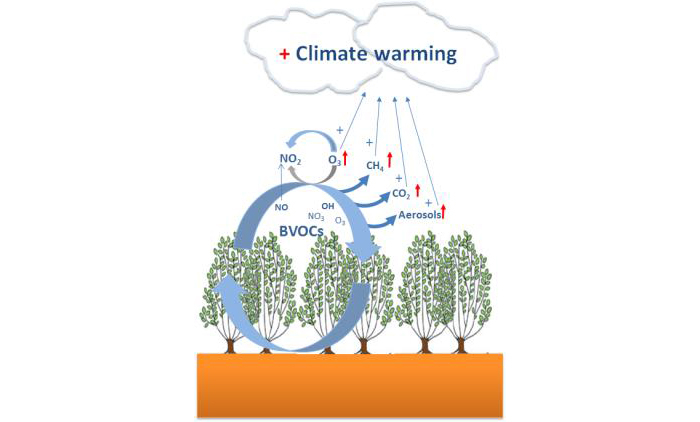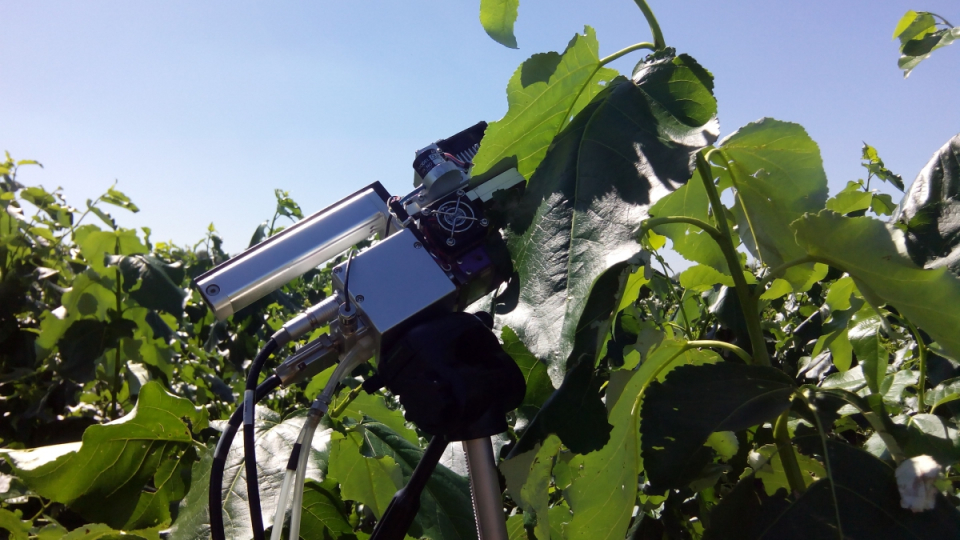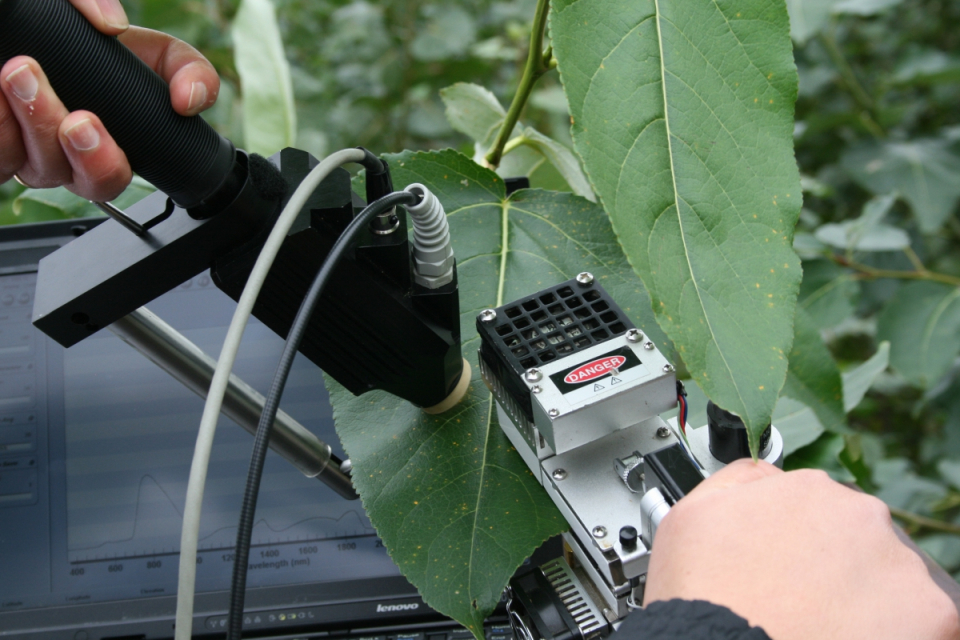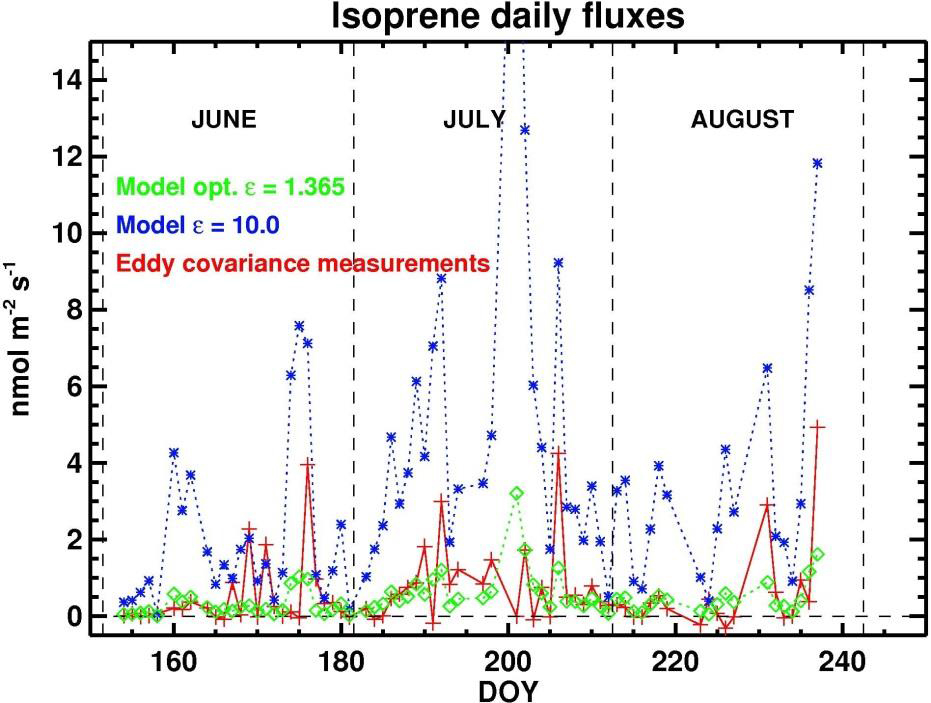Context and objectives
BACKGROUND
Isoprenoids represent an important class of Biogenic Volatile Organic Compounds (BVOCs). Among plant BVOCs, isoprenoids form the most abundant class, with isoprene representing about half of the total BVOCs emitted globally. The presence of BVOCs – and in particular of isoprene – alters the cycle NO–NO2–O3 responsible for O3 formation & degradation leading to the formation of other secondary pollutants such as peroxyacyl nitrates (PAN’s) and particulate matter.
OVERALL AIM
In the HYPI project we linked isoprene flux measurements at the leaf and canopy levels to hyperspectral vegetation indices. We aimed to demonstrate whether hyperspectral vegetation indices offer the possibility for an improved estimation of the spatial and temporal variability of isoprene emissions of ecosystems.
Project outcome
Results
The project examined the relation between isoprene emission and Photochemical Reflectance Index (PRI). There was a slightly significant correlation between isoprene emissions for mature leaves at the top of the canopy. However, environmental conditions affected this relation and a good relationship was only found for sunny days. Indices related to pigment pool (e.g. carotenoids) are promising vegetation indices for remotely based estimation of isoprene emission.
| Project leader(s): | UA - Plants and Ecosystems (PLECO) | |||||
| Belgian partner(s) |
|
|||||
| International partner(s) |
|
|||||
| Location: |
Continent:
Country:
Region:
|
|||||
| Related presentations: | ||||||
| Website: | https://www.uantwerpen.be/en/rg/pleco/research/research-projects/HYPI | |||||





